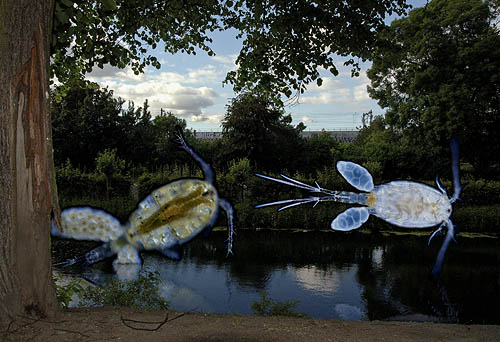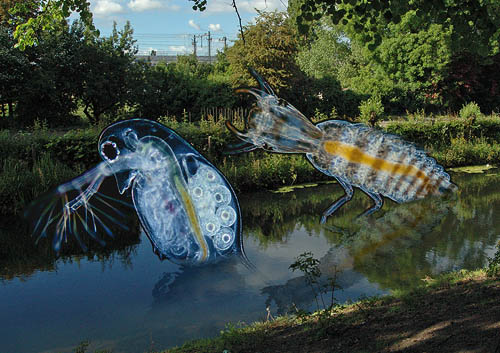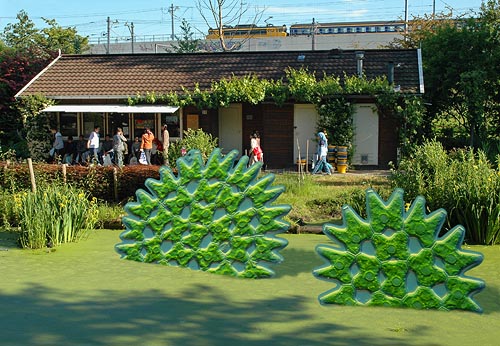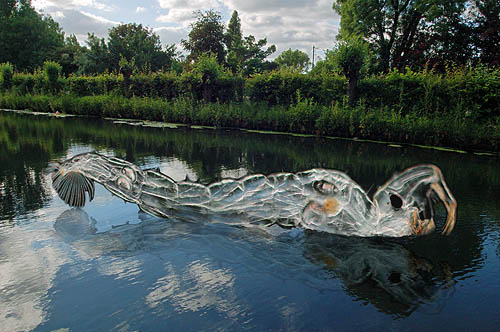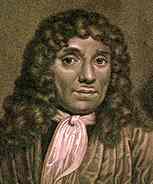 |
Van Leeuwenhoek's secret revealedby Wim van Egmond, the Netherlands |
 |
More than 325 years ago Anthonie van Leeuwenhoek discovered the microworld. He was the first person who observed blood cells and micro organisms like ciliates, rotifers and bacteria (1). In his time he was the only one who made these observations and it would take many decades before other people could confirm his observations. How was it possible that someone without any scientific background and with very primitive equipment could make such historic discoveries? Was it the special optics he used or some kind of secret method of illumination? In this little photo essay I will give some insights that may come as a surprise for those who have never visited the Netherlands. Everyone knows that compared to
small things less small things look big. Anthonie
van Leeuwenhoek's great achievement was that
he recognized this
and
he made clever use of this knowledge. Van Leeuwenhoek designed a
very small microscope with an extremely small lens. As we all know
the Netherlands
is a
very small country. This fact, in combination with a miniscule
microscope
makes small things look even bigger, and enabled van Leeuwenhoek
to reach magnifications of almost 320X. (see note: 2) Enough to make
bacteria look
like peas (cocci) or rice grains (bacilli). (3) Actually, people in the Netherlands knew about microorganisms way before the 17th century. For the Dutch they are as ordinary as flowers and trees. It is just that nobody except van Leeuwenhoek thought of sending letters about it to the Royal Society in London. I live in the Netherlands myself, only a 20 minute bicycle ride from where van Leeuwenhoek lived. I grew up very near to where he made his major discoveries. My house is in front of a canal and the following pictures are some snapshots capturing some moments of the day. Just to give you an idea what I see when I walk out the door of my very little house towards the tiny canal. |
At dusk I am rudely awakened by the jumping and splashing of cyclopoid copepods chasing one another in a playful mood. |
A few hours later the scene in the canal become a bit grimmer when the daily water beetle-larva hunt for water fleas begins. |
At noon life becomes more relaxed. Two colonies of Pediastrum turn their flat green cells towards the bright sun. They will lay there photosynthesizing quietly for the rest of the afternoon. A magnificent sight but the children in the background are so used to them they hardly take notice. |
Finally at dawn we can hear the call of the ghost midge larva Chaoborus. |
Author Wim van Egmond is a Dutch photomicrographer. Apart from his work as curator for the Micropolitan Museum he is probably best known from his book: Microbial Art Climatology: art explained beyond all contradiction. In this standard work he promotes the use of microorganisms as an important aid for the determination of the quality of art. In a beautifully illustrated facsimile he explains how to submerge artworks and which microorganisms are the indicator species for different types of art. |
Notes and references:
1. Sendbrieve aan de Heeren van de koninglijke societeit te London en andre
geleerde luyden over verscheyde verborgenheden der natur.
5 volumes, Leyden and delft, 1687.
Latin translation, Delft, 1719.
Letters to the Royal Society.
2. note: The Netherlands is about 10 times smaller than an average country,
the diameter of the lenses of van Leeuwenhoek's microscope is about 1/32th
of normal
lenses. 10 X 32 gives a magnification of approx 320X.
3. An abstract of a letter . . . Sep. 17, 1683. containing some microscopical
observations, about animals in the scurf of the teeth.
Philosophical Transactions, 1684, 14: 568-574.
Records discovery of bacteria in the mouth, with the first illustrations
of the basic types – cocci, bacteria and spiral forms. Although Leeuwenhoek
had observed bacteria earlier, this paper has usually been considered to
be the first
memoir on bacteria.
4. The Liechtenstein attempts to break the 1400X magnification barrier.
The very big book about small things (Rotterdam 2002) 31: 4581-4702.
A comprehensive guide to the History of TSCM Microscopy (Tiny Lens Small
Country Microscopy).
Visit the Micropolitan Museum
Comments to the author Wim van Egmond are welcomed.
Microscopy
UK Front Page
Micscape
Magazine
Article
Library
all material © Wim van Egmond
